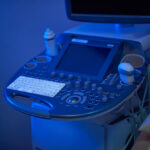1. What is Hysteroscopy?
Hysteroscopy is a minimally invasive procedure that allows a doctor to examine the inside of the uterus. It involves inserting a thin, lighted tube called a hysteroscope through the vagina and cervix into the uterus. This procedure can be both diagnostic and therapeutic. It is commonly used to diagnose and treat abnormal bleeding, fibroids, polyps, adhesions, and other uterine abnormalities. Hysteroscopy can also be utilized to perform surgical procedures, such as removing fibroids or polyps, or to take a biopsy.
2. Benefits of Hysteroscopy
Hysteroscopy offers several benefits compared to more invasive surgical procedures:
- Minimally Invasive: It requires no incisions, reducing the risk of infection and shortening recovery time.
- Accurate Diagnosis: Provides a clear and direct view of the uterus, leading to accurate diagnosis and treatment of uterine conditions.
- Quick Recovery: Most patients can return to normal activities within a day or two.
- Outpatient Procedure: Typically performed on an outpatient basis, avoiding the need for an overnight hospital stay.
- Versatile: Can be used both for diagnostic purposes and to perform minor surgical procedures, reducing the need for multiple surgeries.
3. How to Prepare for the Procedure
Preparation for a hysteroscopy involves a few important steps to ensure a smooth procedure:
- Consultation with Dr. Adeeb Alshahrour: Schedule a consultation at the Women’s Health Center of Chicago to discuss your symptoms, medical history, and the reasons for the hysteroscopy.
- Medical Evaluation: Dr. Alshahrour may recommend a pelvic exam and imaging tests, such as an ultrasound, to gather more information about your condition.
- Medications: Inform Dr. Alshahrour about all medications, supplements, and vitamins you are currently taking. You may need to stop taking certain medications before the procedure.
- Fasting Instructions: Depending on whether you will receive local or general anesthesia, you may be instructed to avoid eating and drinking for a few hours before the procedure.
- Arrangements: Arrange for someone to drive you home after the procedure, especially if you will be under sedation or general anesthesia.
4. What to Expect During the Procedure
Understanding what happens during a hysteroscopy can help alleviate any anxiety you might have:
- Anesthesia: The procedure can be performed with local anesthesia, sedation, or general anesthesia, depending on the complexity of the procedure and your comfort level.
- Procedure Steps: You will lie on an examination table with your feet in stirrups. Dr. Alshahrour will gently insert the hysteroscope through your vagina and cervix into your uterus. The hysteroscope transmits images to a monitor, allowing Dr. Alshahrour to examine the uterine lining.
- Duration: The procedure typically takes between 10 to 30 minutes, depending on whether any additional treatments, such as removing polyps or taking a biopsy, are performed.
- Post-Procedure: After the procedure, you will be monitored for a short period to ensure you are recovering well from the anesthesia.
5. Aftercare
Proper aftercare is essential for a smooth recovery:
- Rest: Take it easy for the rest of the day after the procedure. Most patients can return to normal activities the following day.
- Pain Management: You may experience mild cramping or spotting for a few days. Over-the-counter pain relievers, like ibuprofen, can help manage discomfort.
- Avoid Certain Activities: Avoid using tampons, douching, or having sexual intercourse for a few days to prevent infection.
- Follow-Up: Attend any scheduled follow-up appointments with Dr. Alshahrour to discuss the results and any further treatment if needed.
- Report Symptoms: Contact the Women’s Health Center of Chicago if you experience heavy bleeding, severe pain, fever, or unusual discharge.
Book Your Appointment Now !
Led by Dr. Adeeb Alshahrour, we offer exceptional obstetrics and gynecology medical services.
Patient Testimonials
Discover what our patients in Chicago are saying about our leading OBGYN practice

About Dr. Adeeb Al-Shahrour
Dr. Adeeb Alshahrour is an obstetrician-gynecologist in Chicago, Illinois and is affiliated with multiple hospitals in the area, including Northwestern Medicine Central DuPage Hospital and St. Anthony Hospital-Chicago. He received his medical degree from University of Aleppo Faculty of Medicine and has been in practice for more than 20 years.
Frequently Asked Questions
Most patients experience only mild discomfort during a hysteroscopy. Local anesthesia or sedation can help minimize any pain. Some cramping and spotting are normal after the procedure, but severe pain is uncommon and should be reported to Dr. Adeeb Alshahrour.
Recovery is usually quick, with most women resuming normal activities within a day or two. Mild cramping and spotting may occur for a few days post-procedure.
Hysteroscopy is generally safe, but, like any medical procedure, it carries some risks. These can include infection, bleeding, or injury to the uterus. Dr. Alshahrour will discuss these risks with you before the procedure.
Hysteroscopy is not performed during pregnancy. If you suspect you might be pregnant, inform Dr. Adeeb Alshahrour before the procedure.
Hysteroscopy can diagnose and treat a variety of conditions, including uterine fibroids, polyps, adhesions, abnormal bleeding, and structural abnormalities of the uterus. It can also be used to perform biopsies and remove foreign objects.




